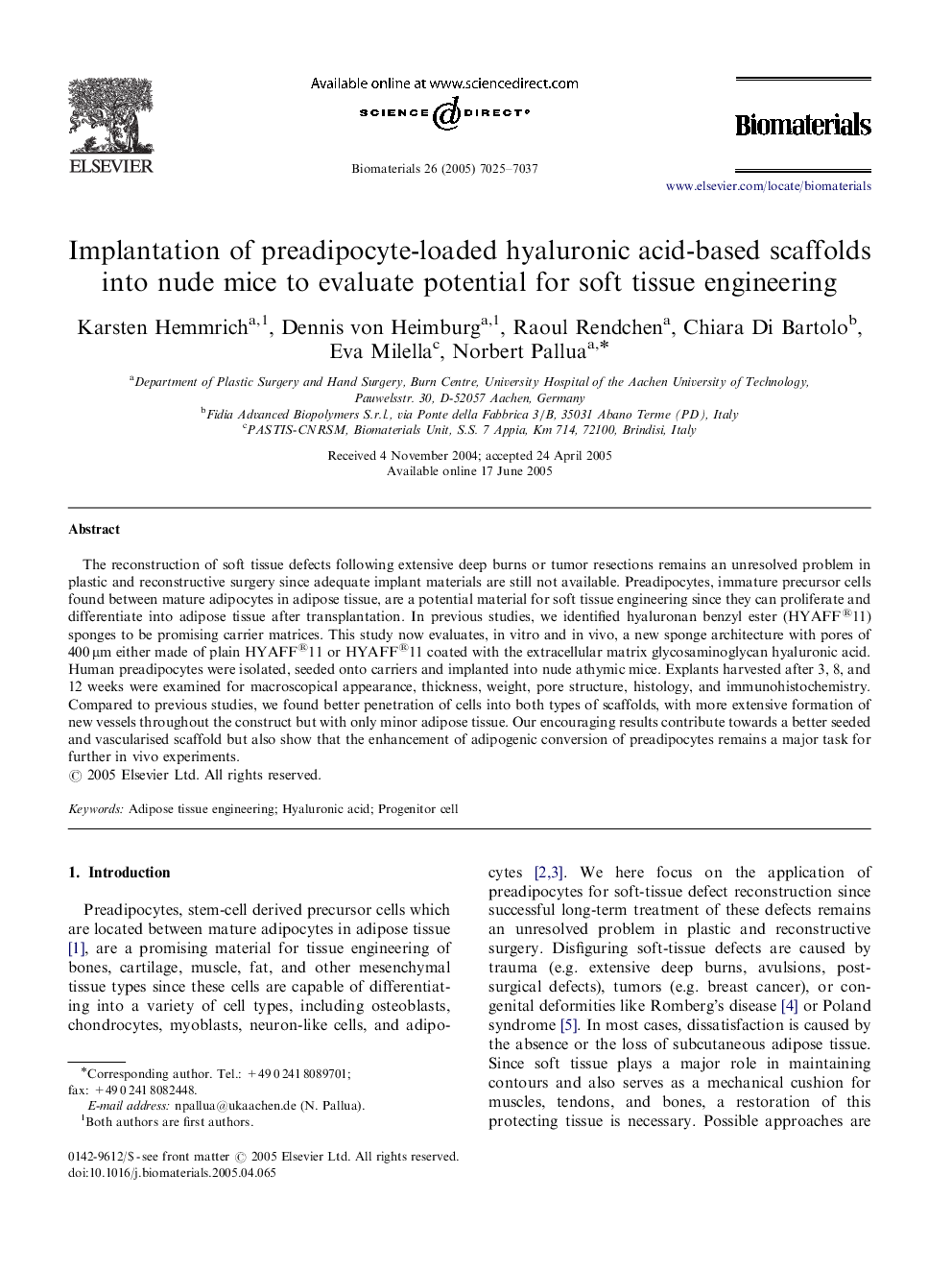| Article ID | Journal | Published Year | Pages | File Type |
|---|---|---|---|---|
| 12460 | Biomaterials | 2005 | 13 Pages |
The reconstruction of soft tissue defects following extensive deep burns or tumor resections remains an unresolved problem in plastic and reconstructive surgery since adequate implant materials are still not available. Preadipocytes, immature precursor cells found between mature adipocytes in adipose tissue, are a potential material for soft tissue engineering since they can proliferate and differentiate into adipose tissue after transplantation. In previous studies, we identified hyaluronan benzyl ester (HYAFF®11) sponges to be promising carrier matrices. This study now evaluates, in vitro and in vivo, a new sponge architecture with pores of 400 μm either made of plain HYAFF®11 or HYAFF®11 coated with the extracellular matrix glycosaminoglycan hyaluronic acid. Human preadipocytes were isolated, seeded onto carriers and implanted into nude athymic mice. Explants harvested after 3, 8, and 12 weeks were examined for macroscopical appearance, thickness, weight, pore structure, histology, and immunohistochemistry. Compared to previous studies, we found better penetration of cells into both types of scaffolds, with more extensive formation of new vessels throughout the construct but with only minor adipose tissue. Our encouraging results contribute towards a better seeded and vascularised scaffold but also show that the enhancement of adipogenic conversion of preadipocytes remains a major task for further in vivo experiments.
